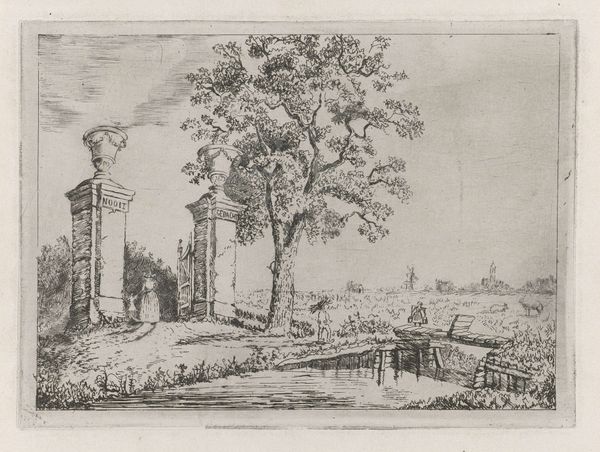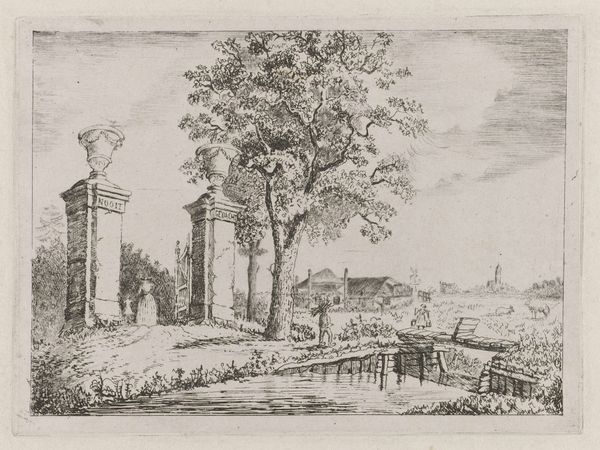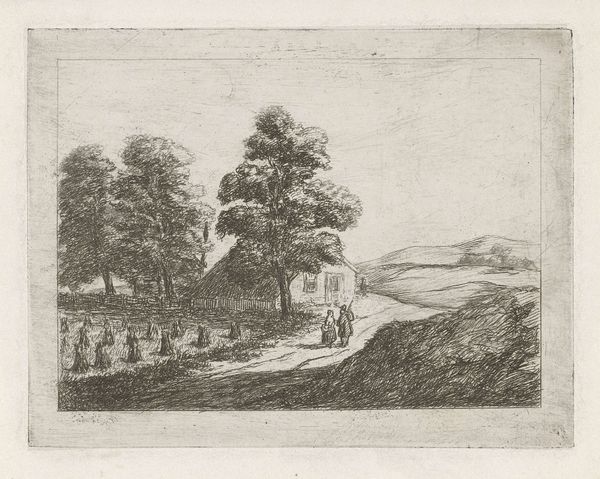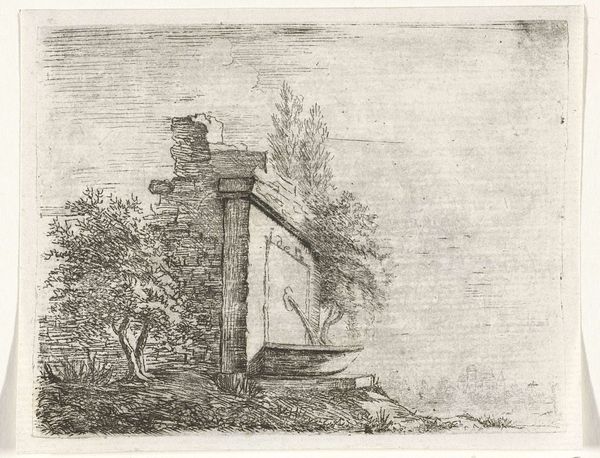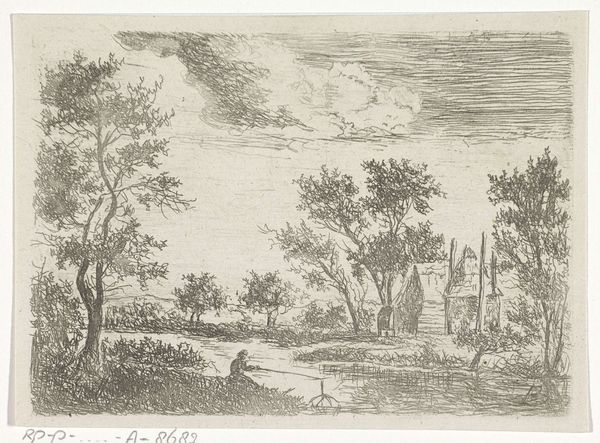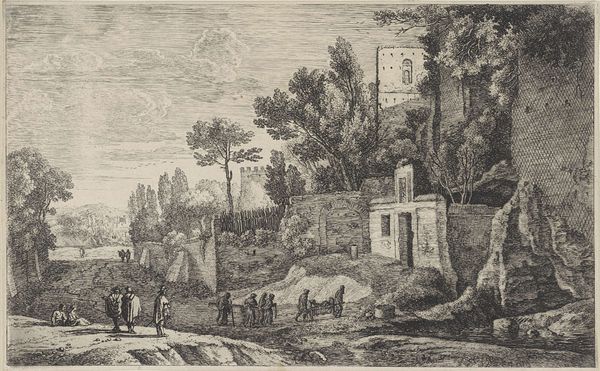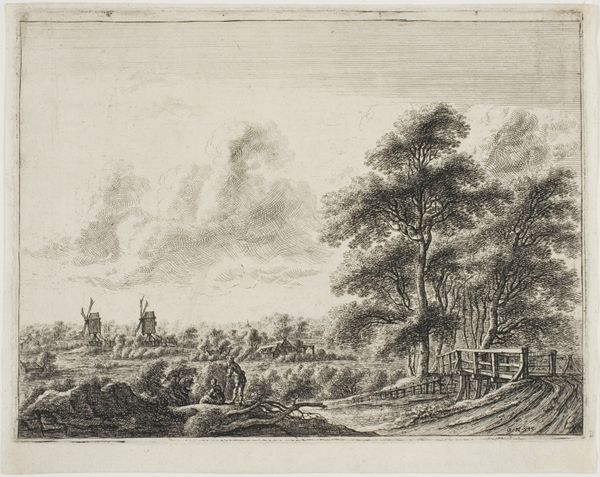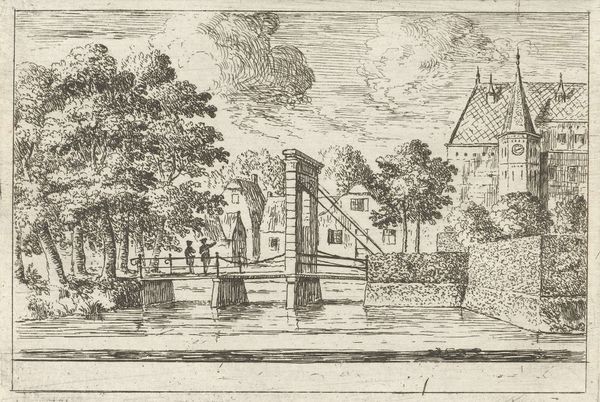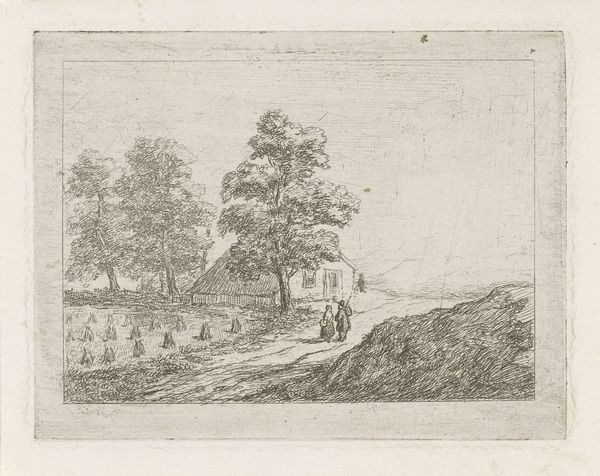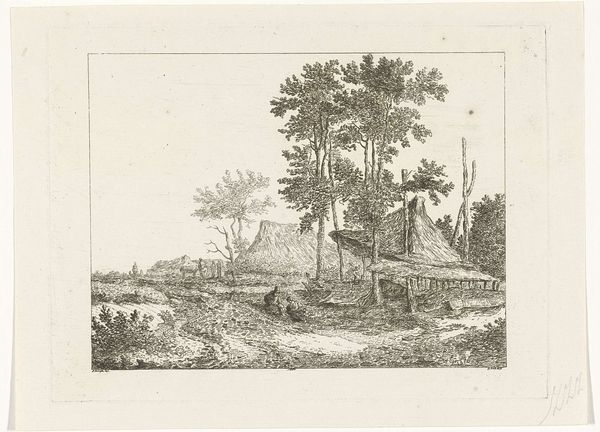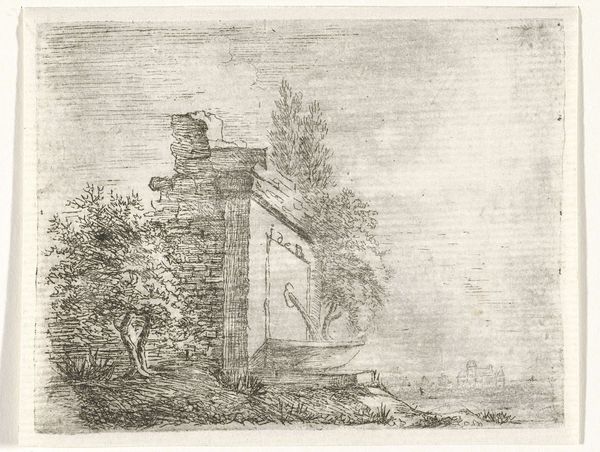
Dimensions: height 100 mm, width 136 mm
Copyright: Rijks Museum: Open Domain
Curator: This etching, made around 1860 by Eberhard Cornelis Rahms, is entitled "Ingang van de buitenplaats 't Paradijs," which translates to "Entrance to the country estate 'The Paradise'." Editor: My initial response is that the atmospheric perspective feels delicate. The almost monochromatic palette, the focus on line and shading... it invites a kind of quiet contemplation. Curator: Indeed. Rahms was working during a time of significant shifts in Dutch society. Etchings like this provided a visual representation of idealized landscapes, showcasing the wealth and leisure associated with country estates during an era of increasing industrialization and urbanization. This scene offers an escape, a glimpse into a world untouched by the rapidly changing urban landscape. Editor: It’s interesting that you mention ‘escape’, because my eye is immediately drawn to the entranceway itself. It bifurcates the composition, one side offering a kind of structured perspective leading toward diminutive figures on a pathway flanked by orderly trees. While on the right the tree feels quite unruly and pushes toward what appears to be the untamed periphery beyond the gates. I wonder if Rahms is working with a visual tension between these constructed, man-made elements, and the more natural setting? Curator: That tension speaks volumes about the period. The placement of those figures walking away into the distance, coupled with the small boat under the bridge – everything feels intentionally staged to evoke a particular kind of rural nostalgia. Note too, how such imagery was actively consumed by an emerging middle class seeking to emulate aristocratic lifestyles, bolstering their own social aspirations. Editor: The printmaking technique itself seems crucial here. The finely etched lines create a softness and detail that might be harder to achieve in, say, an oil painting. The precision required of the process mimics the carefully cultivated and manicured feel of the landscape, and contributes to that dreamlike atmosphere you mentioned earlier. Curator: Exactly. And considering the distribution of prints like these through periodicals and art societies, it reflects how artistic tastes were shaped and disseminated across society. Editor: So, from a formal perspective, Rahms plays with light, shadow, and composition to achieve an elegant effect, creating what I initially sensed as this nostalgic idealization of nature. Curator: While situating itself perfectly within larger socio-economic structures and shifts in cultural desires of the time. I find these landscapes reveal less about 'paradise' itself and much more about the social dynamics around access and the representation of wealth during that period. Editor: Yes, these details push me to rethink what first appeared to be a serene portrayal of nature and place a more analytical frame over it. Curator: It's fascinating how delving into both the history and the artistic decisions within this seemingly simple landscape, reveal a society in transition, grappling with its identity.
Comments
No comments
Be the first to comment and join the conversation on the ultimate creative platform.
